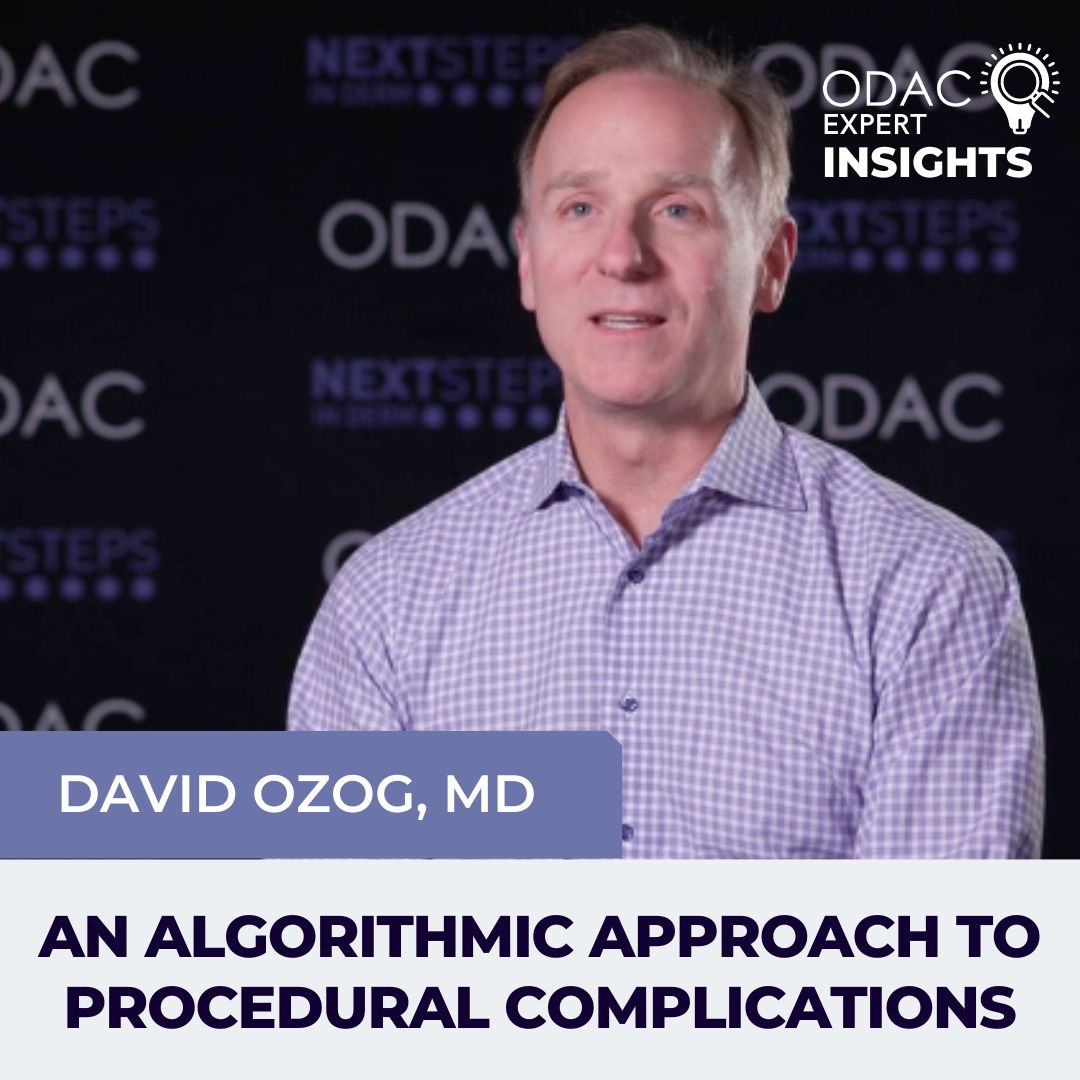Next Steps in Derm, in partnership with ODAC Dermatology, Aesthetic & Surgical Conference, interviewed Dr. David Ozog, chair of the dermatology department at Henry Ford Hospital. Watch as Dr. Ozog outlines his approach to handling complications from dermatology procedures. He believes communication may very well be the most important consideration, so hear how he keeps in touch with his patients post-procedure. Learn why understanding the typical timing of certain adverse events can help you manage them. Plus hear Dr. Ozog’s tips for preventing and minimizing complications in the first place.
Further Reading
If you want to read more about procedural complications, check out the following articles published in the Journal of Drugs in Dermatology:
ABSTRACT
Background: Clinically large cutaneous tumors and those with aggressive subclinical extension (ASE) often require wider margins and increased operative time during Mohs micrographic surgery (MMS). Our goal is to improve dermatologic surgeons’ counseling information on complication risks for aggressive tumors. Objective: To examine the incidence of postoperative complications in MMS patients, with a focus on differences between aggressive and non-aggressive tumors. Methods and Materials: We performed a retrospective cross-sectional chart review of 4151 MMS cases at the University of California, San Diego. A postoperative complication was defined as an adverse event directly related to MMS reported within 6 weeks of the procedure. Results: Clinically, large tumors had 50 times the odds of postoperative complication as compared to all other tumors (P less than 0.001). ASE was not found to be significantly associated with higher rates of postoperative complications when controlled for other factors. Conclusion: Clinically, large tumors may be at higher risk for complications following MMS due to their increased size and need for repair with methods other than linear closures. Tumors with ASE were not found to be at higher risk for postoperative complications.
Topical Approaches to Improve Surgical Outcomes and Wound Healing: A Review of Efficacy and Safety
ABSTRACT
Surgical procedures are an important piece of a dermatologist’s daily practice. Therefore, the optimization of post-surgical wound healing is an area of utmost importance and interest. Although low risk, one notable barrier to proper wound healing is surgical site infection.
In an attempt to mitigate this risk and improve surgical outcomes, multiple topical products continue to be used both pre- and postprocedure. Traditionally, this includes both topical antibiotics and antiseptics. However, these products are not without consequence.
The overuse of topical antibiotics as prophylaxis for infection has contributed to increased bacterial resistance, and in fact is no longer recommended by the American Academy of Dermatology in clean post surgical wounds. Topical antiseptics, including chlorhexidine and povidone-iodine, can have a cytotoxic effect on keratinocytes and may actually impede wound healing as a result. In addition, chlorhexidine in particular can produce both otologic and ocular toxic effects when used on the face. Emerging products, such as hypochlorous acid, may be a potential alternative to the more commonly used agents, as it has effective antimicrobial actions and minimal adverse effects. Therefore, the purpose of this review is to highlight several topical products used to optimize post-surgical wound healing and discuss both their efficacy and safety.
Did you enjoy this video interview? Find more here.
TAGS DAVID OZOG, MD; SURGERY; COMPLICATIONS; MOHS SURGERY; SCAR

